(1767, Paris – 1842, Paris)
Landscape of Ile de France
Oil on canvas
H. 38 cm; L. 46 cm
Related work: painting of the same composition preserved at the J. Paul Getty Museum (Los Angeles)
Jean-Victor Bertin can probably place himself, after his master Valenciennes, in the second rank of the so-called “neo-classical” French landscapers of the end of the 18th century and the first third of the 19th century, ahead of Bidauld, Dunouy, Chauvin and even Boguet. Among his best-known students are Corot, Michallon, Daubigny. Bertin often made several copies of his compositions, reflecting their success, sometimes in quite large numbers. These covers, which the art historian Suzanne Gutwirth considered to be late “food” works (the 1830s) by Bertin to compensate for his financial difficulties and his declining success, seem rather to have been carried out at the time of the original composition, in Bertin's workshop. This workshop thus had not only an educational role with many students, but also a vocation to participate in the creation of replicas. Some were signed by Bertin, others not, which does not mean that they were not in his hand, at least in part. The other versions known to date of our table are few in number; that of the Getty, of comparable dimensions, does not include figures, and could be the original sketch executed on site in the open air. We find in our painting Bertin's great sense of light and his very precise treatment of the foliage, the workshop having been able to take care of the steep hillside and its small trees, the central dwellings, and the group of figures on the left. This village bathed in soft late afternoon light could be located south of Paris, in the Bièvre or Essonne valley.



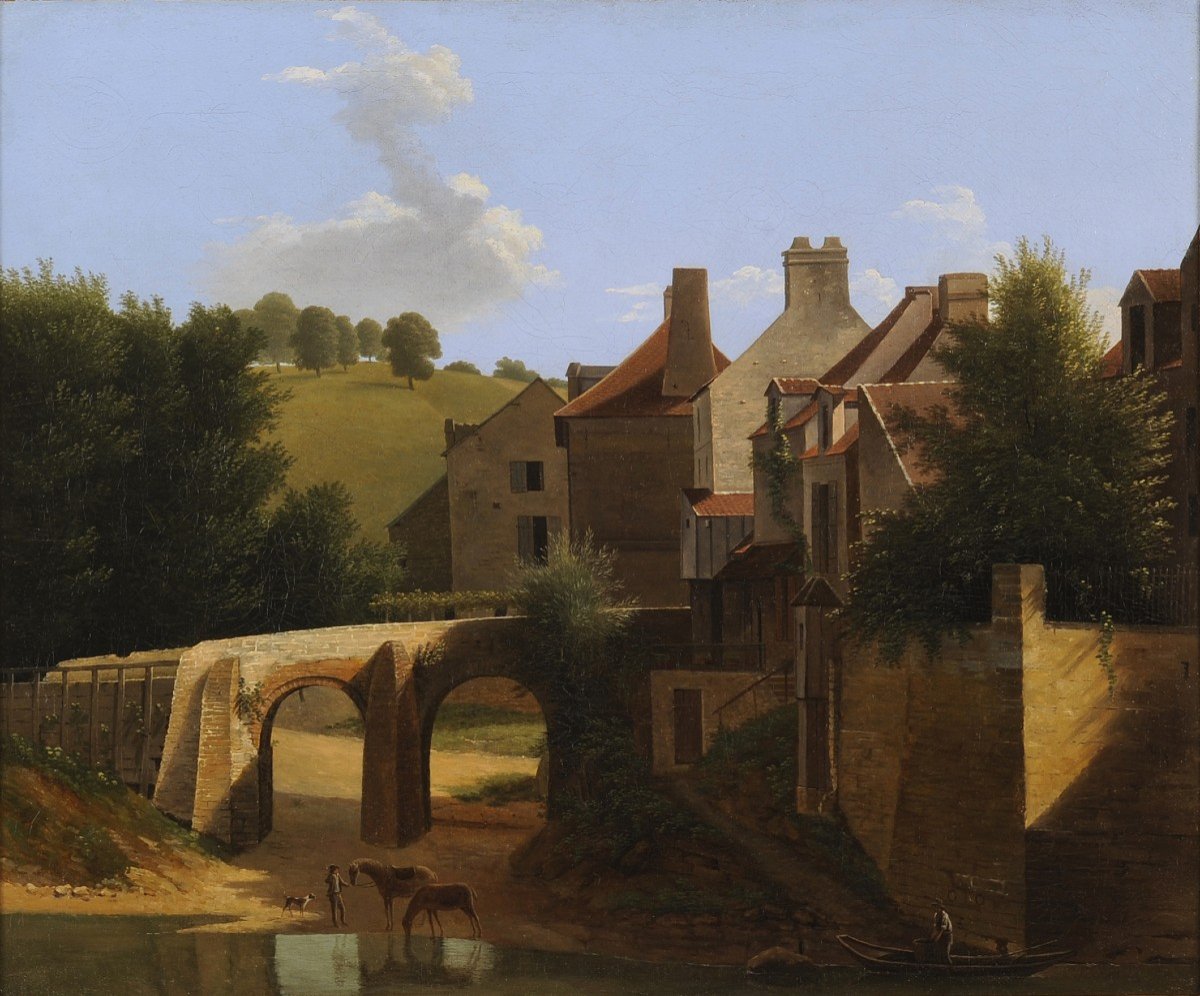
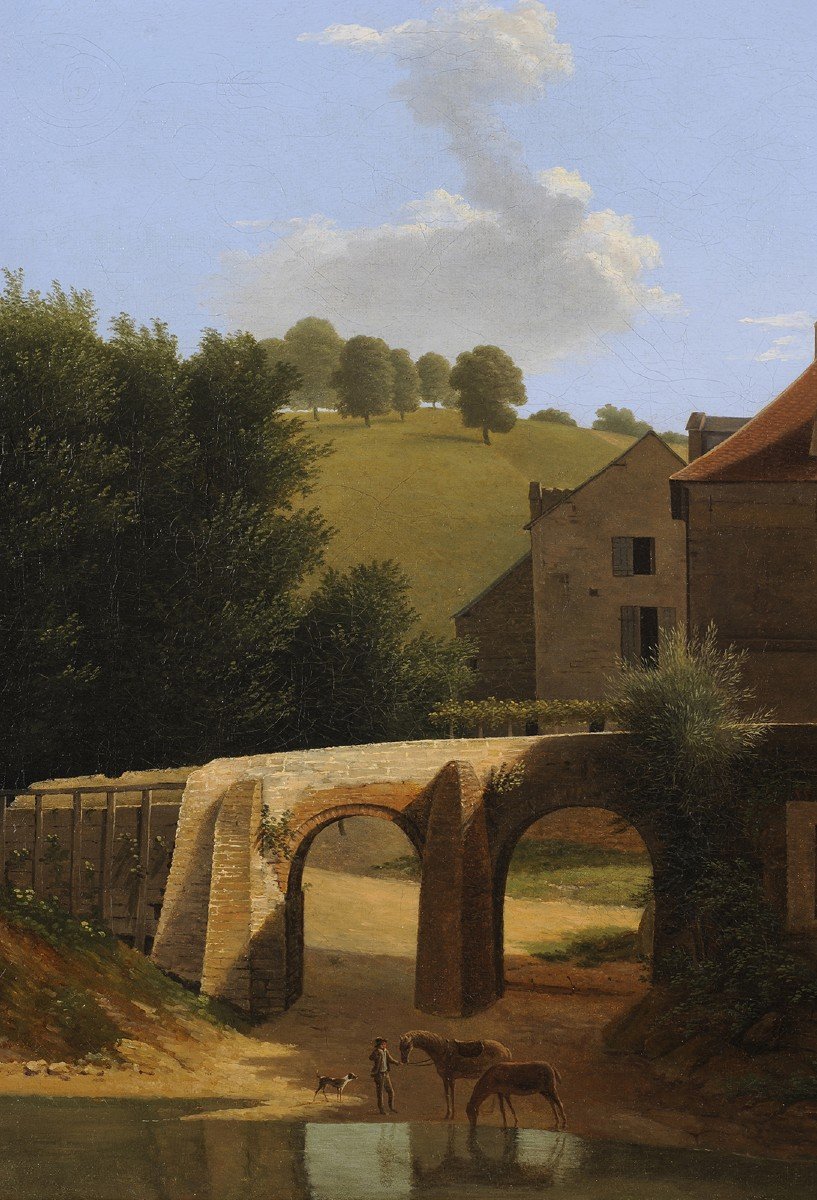
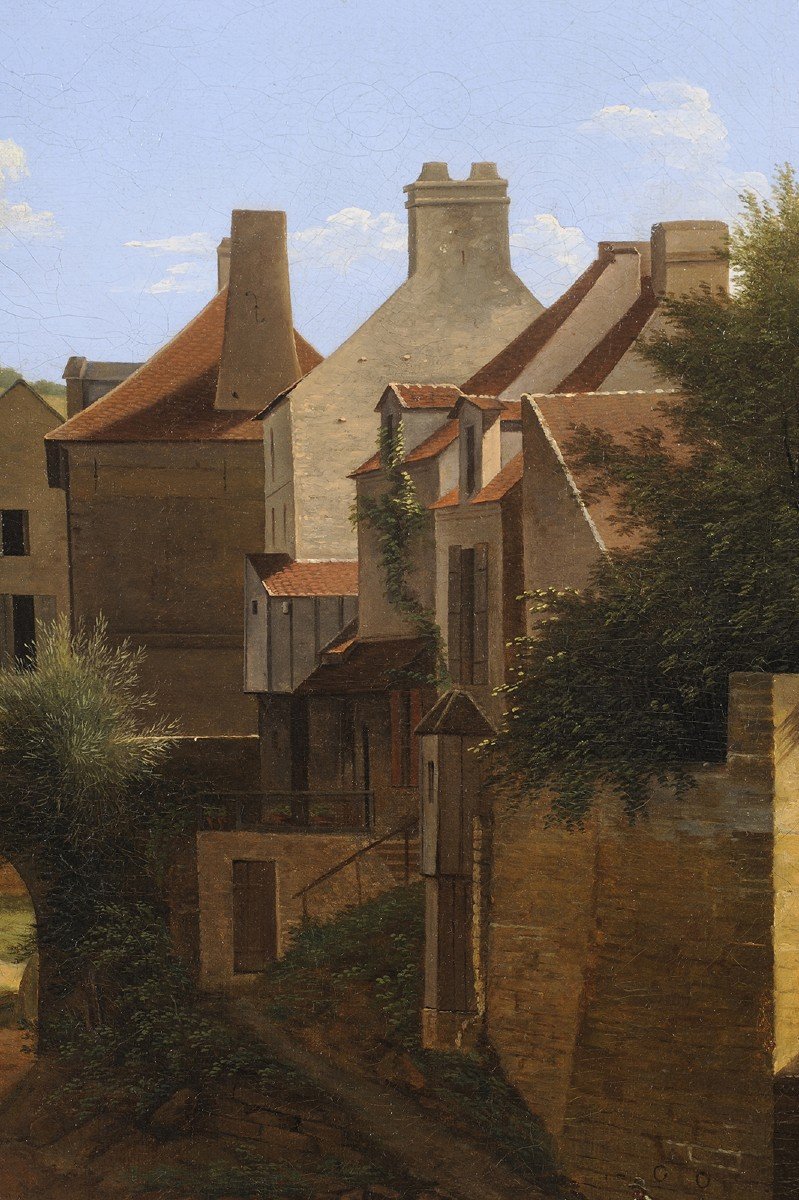
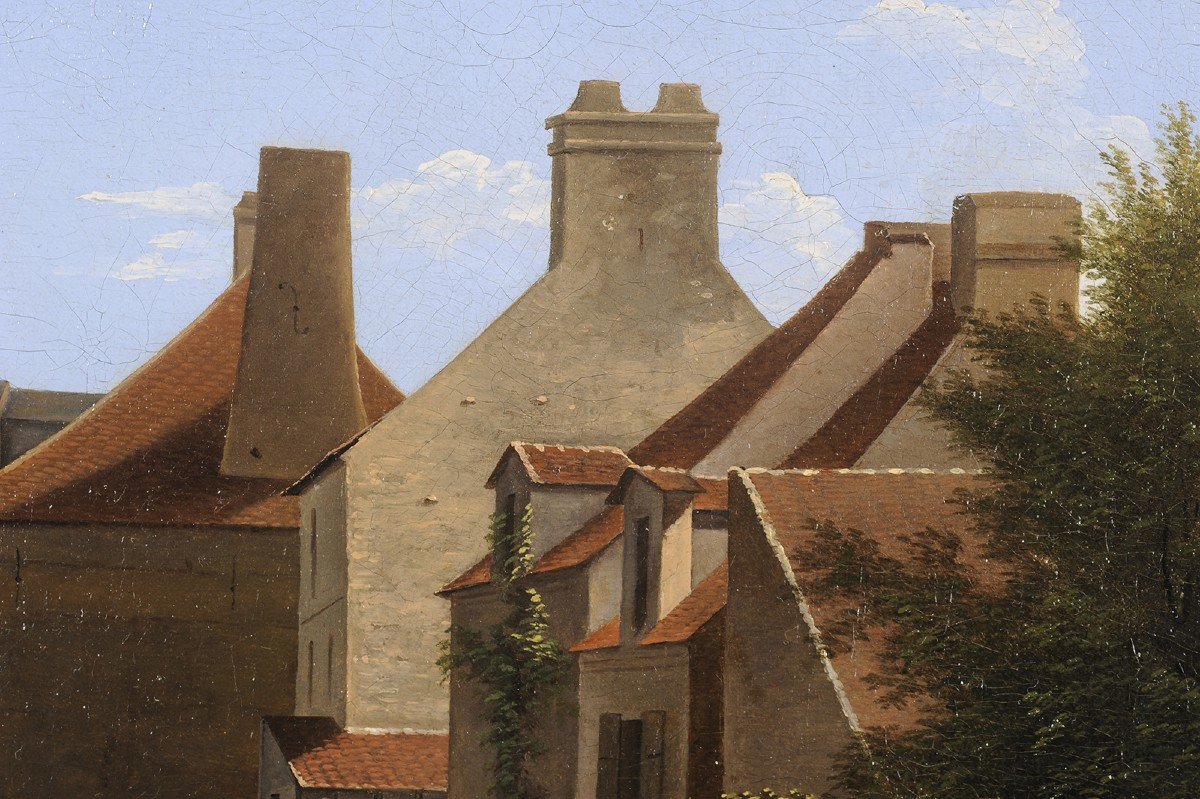
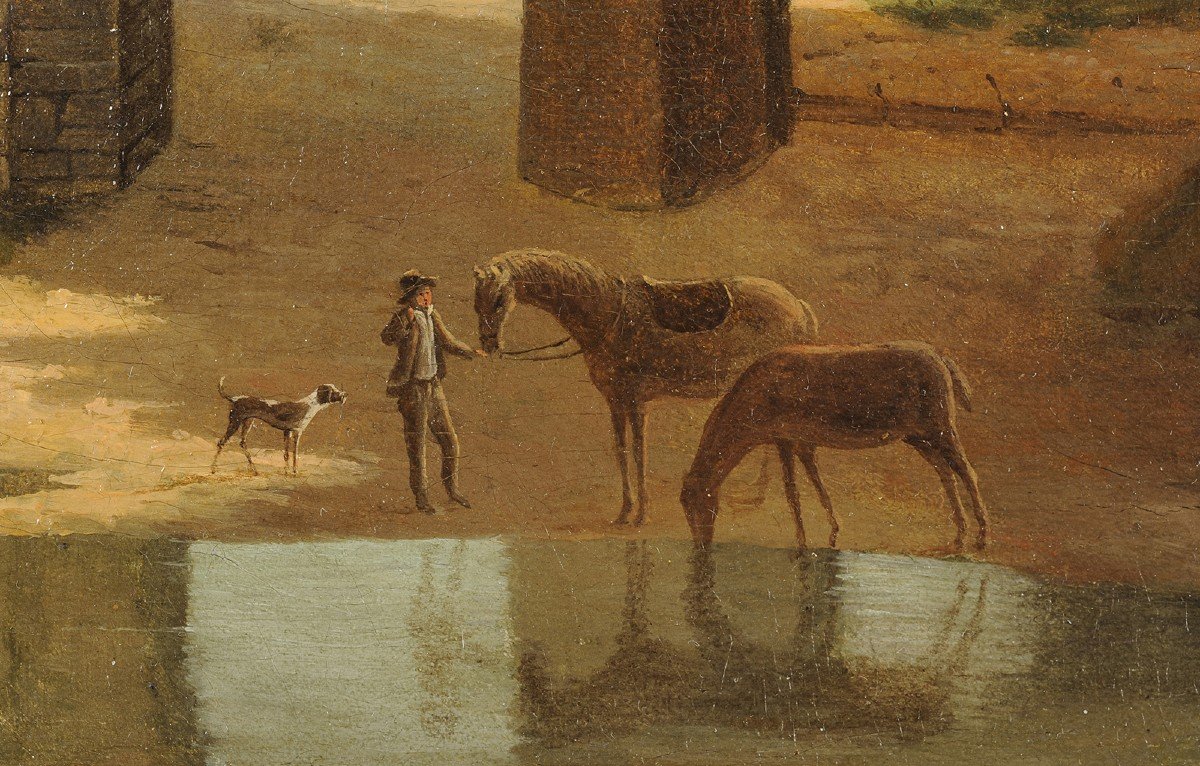
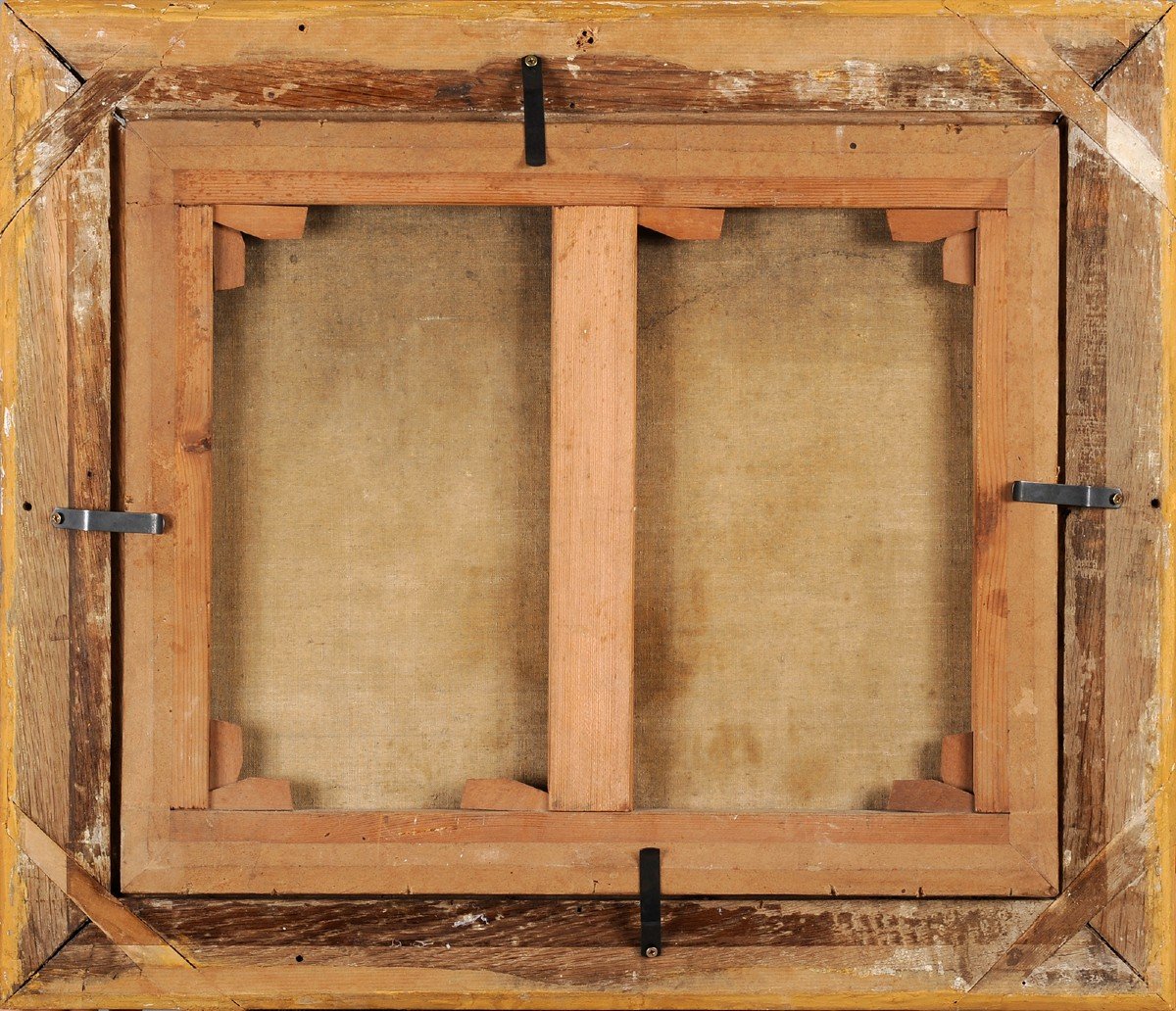








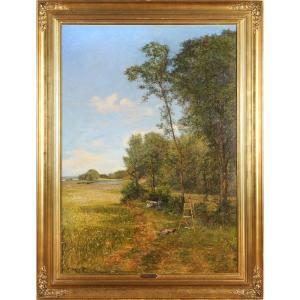


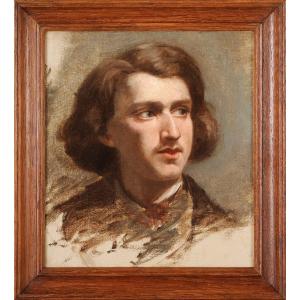



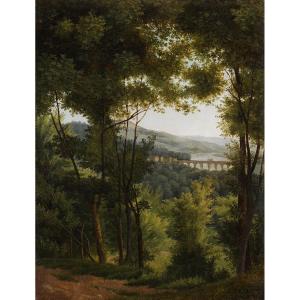
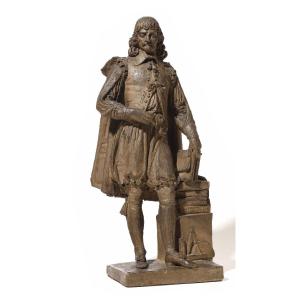


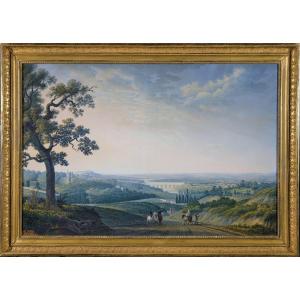

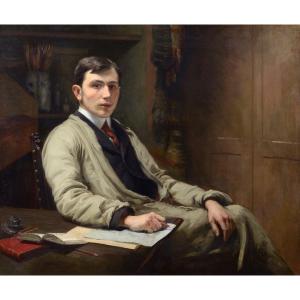



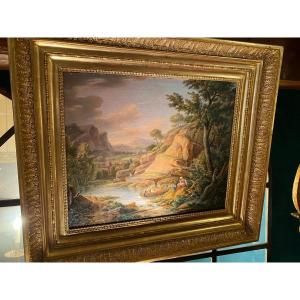





 Le Magazine de PROANTIC
Le Magazine de PROANTIC TRÉSORS Magazine
TRÉSORS Magazine Rivista Artiquariato
Rivista Artiquariato